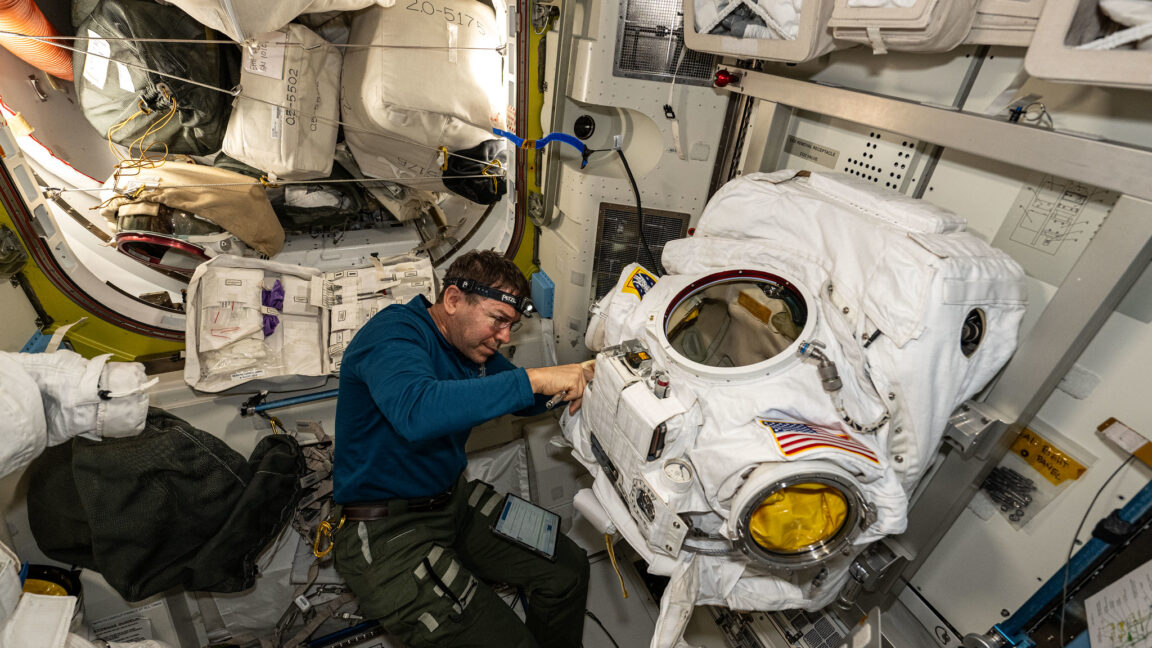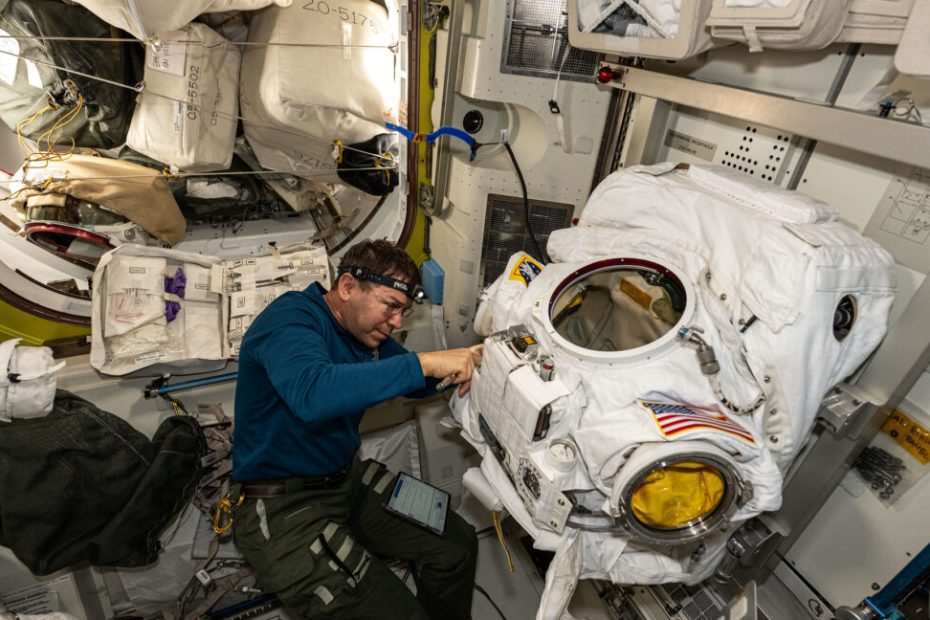
Once the leak had stabilized, the astronauts closed the hatch and began repressurizing the airlock.
“Getting the airlock closed meant me grabbing her legs and using her as an end effector to get that thing closed, and she just made it happen,” Barratt said. “So yes, there was drama. Everything worked fine. Again, normal processes and procedures saved us.”
Barratt said the leak was not caused by a procedural error as the astronauts prepared their suits for the spacewalk.
“It was definitely a hardware problem,” he said. “There was a little poppet valve on the interface that wasn't quite in place, so the question really became, why wasn't it in place? We solved that problem by replacing the entire umbilical.”
By then, NASA's attention to the space station had turned to other tasks, such as experiments, the arrival of a new freighter, and testing of Boeing's Starliner crew capsule docked at the complex before it finally departed, leaving its crew behind. The spacewalk was not urgent and therefore had to wait. NASA now plans to try the spacewalk again with a different group of astronauts as early as January.
Barratt thinks the spacesuits on the space station will be well suited for the next spacewalk. However, the suits are decades old and their original designs date back more than 40 years, when NASA developed the units for use in the space shuttle. Efforts to develop a replacement suit for use in low Earth orbit have stalled. In June, Collins Aerospace quit a NASA contract to build new space suits to service the International Space Station and future research outposts in orbit.
“None of our spacesuits are spring chickens, so we expect to see some hardware issues with repeated use and no real upgrading,” Barratt said.

